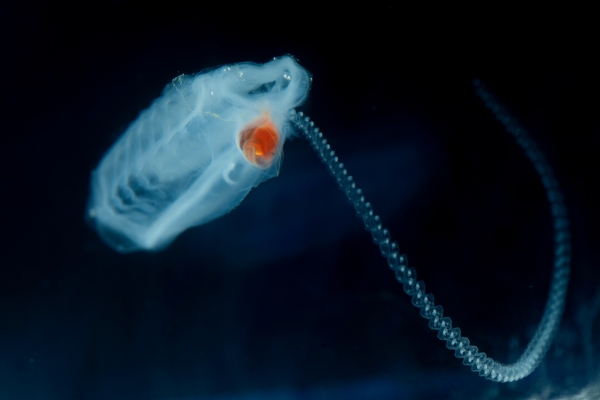30 October 2018. By Voyage Leader Dr Moira Decima.
The cold-water salp Salpa thompsoni has dominated the catch, and we have done multiple tows to know their abundance (how many), and are carrying out experiments to investigate what they eat, how many faecal pellets (poop) they produce, and how fast these sink. These pellets both help transport carbon from CO2 at the surface to depth, and are food for the animals that leave in the deep sea.
We also want to know the population of S. thompsoni, so we look at the different stages and sizes of zooids in the water. We count and measure the oozooid (solitary, asexual) and blastozooid (aggregate, sexual) animals are in our nets.
We are finding that the oozooids (solitary) S. thompsoni have really been cranking out their zooid clones! If you look closely, you can even count the blastozooids (clones) in the stolon that will soon be released by the oozooid. There is a double row of them, and the tiny white areas are the guts of the newly produced female blastozooids. These will then go on to be fertilised, produce an embryo, and later turn into males to fertilise more females!
With their complex life style, using both asexual (clones) and sexual reproduction, salps can bloom very quickly and dominate the plankton community.

